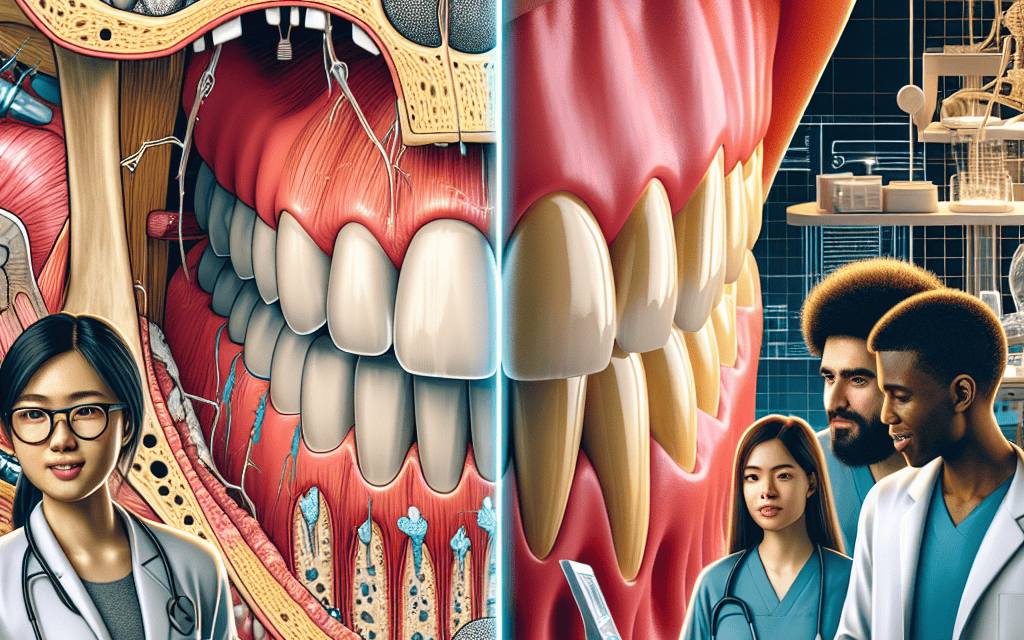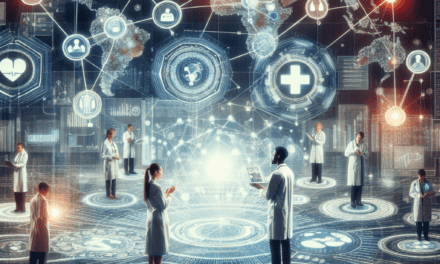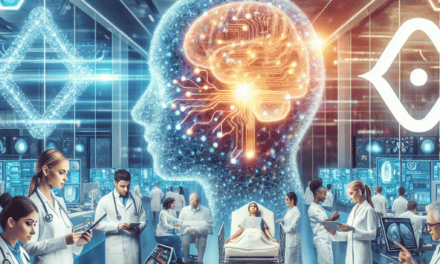Understanding the Health Effects of Teeth Grinding and Stress: Innovative Medical Solutions for Diagnosis and Care
Teeth grinding, clinically known as bruxism, is a common condition that affects millions of people worldwide. Often linked to stress and anxiety, bruxism can lead to a range of health issues, including dental problems, headaches, and jaw pain. As awareness of the condition grows, so does the need for effective diagnosis and innovative medical solutions. This article delves into the health effects of teeth grinding, the relationship between stress and bruxism, and the latest advancements in diagnosis and care.
The Connection Between Stress and Teeth Grinding
Stress is a significant factor contributing to bruxism. Understanding this connection is crucial for both prevention and treatment. Stress can manifest in various ways, and teeth grinding is one of the physical responses that can occur.
Understanding Bruxism
Bruxism is characterized by the involuntary grinding or clenching of teeth, often during sleep. It can be classified into two types: sleep bruxism and awake bruxism. Sleep bruxism occurs during sleep and is often associated with other sleep disorders, while awake bruxism happens when a person is awake and usually involves clenching the jaw.
According to the American Dental Association, approximately 8-10% of adults experience bruxism. The condition can lead to various complications, including:
- Tooth wear and damage
- Jaw pain and dysfunction
- Headaches and migraines
- Increased tooth sensitivity
- Disruption of sleep patterns
How Stress Triggers Bruxism
Stress activates the body’s fight-or-flight response, leading to muscle tension and increased adrenaline levels. This physiological response can result in clenching the jaw and grinding teeth, often unconsciously. Factors contributing to stress include:
- Work-related pressures
- Financial concerns
- Relationship issues
- Health problems
Research indicates that individuals with high levels of stress are more likely to experience bruxism. A study published in the Journal of Oral Rehabilitation found that individuals with anxiety disorders were significantly more likely to grind their teeth compared to those without such disorders.
Psychological Factors and Bruxism
In addition to stress, psychological factors such as anxiety and depression can exacerbate bruxism. Individuals with these conditions may have heightened muscle tension and a lower threshold for stress, leading to increased grinding. Cognitive-behavioral therapy (CBT) has shown promise in treating bruxism by addressing the underlying psychological issues.
Case Studies: Stress and Bruxism
Several case studies illustrate the connection between stress and bruxism. For instance, a 35-year-old woman experiencing severe work-related stress reported nightly teeth grinding. After implementing stress management techniques, including mindfulness and relaxation exercises, her bruxism significantly decreased.
Another case involved a 40-year-old man who developed bruxism after a traumatic life event. Therapy focused on processing the trauma and managing stress led to a reduction in his grinding episodes.
Conclusion on Stress and Bruxism
The relationship between stress and teeth grinding is complex and multifaceted. Understanding this connection is essential for effective diagnosis and treatment. By addressing the underlying stressors and psychological factors, individuals can reduce the frequency and severity of bruxism.
Health Effects of Teeth Grinding
The health effects of teeth grinding extend beyond dental issues. Chronic bruxism can lead to a range of physical and psychological problems that impact overall well-being.
Dental Consequences
One of the most immediate effects of bruxism is dental damage. Continuous grinding can wear down tooth enamel, leading to:
- Increased tooth sensitivity
- Cavities and decay
- Cracked or fractured teeth
- Loss of teeth
According to a study published in the Journal of Dentistry, individuals with bruxism are at a higher risk of developing dental issues compared to those without the condition. Regular dental check-ups are crucial for early detection and intervention.
Musculoskeletal Issues
Bruxism can also lead to musculoskeletal problems, particularly in the jaw and neck. The excessive force exerted during grinding can cause:
- Temporomandibular joint (TMJ) disorders
- Muscle fatigue and soreness
- Headaches and migraines
A study published in the Journal of Orofacial Pain found that individuals with bruxism were more likely to report TMJ disorders and associated pain. Treatment options may include physical therapy, dental splints, and pain management strategies.
Psychological Effects
The psychological impact of bruxism is often overlooked. Chronic teeth grinding can lead to:
- Increased anxiety and stress
- Sleep disturbances
- Reduced quality of life
Individuals with bruxism may experience a cycle of stress and grinding, where the physical effects of bruxism contribute to increased anxiety, which in turn exacerbates the grinding. Addressing both the physical and psychological aspects is essential for effective treatment.
Case Studies: Health Effects of Bruxism
Several case studies highlight the health effects of bruxism. For example, a 28-year-old woman presented with severe tooth wear and chronic headaches. After a comprehensive evaluation, it was determined that her bruxism was linked to high-stress levels and anxiety. Treatment included a dental splint and stress management techniques, resulting in significant improvement.
Another case involved a 50-year-old man who developed TMJ disorders due to bruxism. His treatment plan included physical therapy and relaxation exercises, which alleviated his symptoms and improved his quality of life.
Conclusion on Health Effects of Bruxism
The health effects of teeth grinding are far-reaching, impacting dental health, musculoskeletal function, and psychological well-being. Understanding these effects is crucial for developing effective treatment plans that address the multifaceted nature of bruxism.
Innovative Medical Solutions for Diagnosis
As awareness of bruxism grows, so does the need for innovative diagnostic solutions. Early diagnosis is essential for effective treatment and prevention of long-term complications.
Traditional Diagnostic Methods
Traditionally, bruxism has been diagnosed through clinical evaluation and patient history. Dentists often look for signs such as:
- Tooth wear patterns
- Jaw muscle tenderness
- TMJ dysfunction
However, these methods may not always provide a comprehensive understanding of the condition. As a result, there is a growing interest in more advanced diagnostic techniques.
Emerging Technologies in Diagnosis
Recent advancements in technology have led to innovative diagnostic solutions for bruxism. Some of these include:
- Electromyography (EMG): This technique measures muscle activity and can help identify abnormal jaw muscle function associated with bruxism.
- Polysomnography: A comprehensive sleep study that monitors various physiological parameters during sleep, helping to identify sleep bruxism.
- Wearable devices: Smart devices that track jaw movements and provide data on grinding episodes, allowing for real-time monitoring.
A study published in the Journal of Sleep Research highlighted the effectiveness of polysomnography in diagnosing sleep bruxism, demonstrating its ability to provide valuable insights into the condition.
Case Studies: Innovative Diagnostic Solutions
Several case studies illustrate the benefits of innovative diagnostic solutions. For instance, a 30-year-old patient underwent EMG testing, revealing abnormal muscle activity during sleep. This information guided the treatment plan, which included a dental splint and stress management techniques.
Another case involved a patient using a wearable device to track grinding episodes. The data collected helped the healthcare team identify patterns and triggers, leading to more targeted interventions.
Conclusion on Innovative Diagnostic Solutions
Innovative diagnostic solutions are transforming the way bruxism is identified and managed. By leveraging advanced technologies, healthcare providers can gain a deeper understanding of the condition, leading to more effective treatment strategies.
Innovative Medical Solutions for Care
Effective management of bruxism requires a multifaceted approach that addresses both the physical and psychological aspects of the condition. Innovative medical solutions are emerging to provide comprehensive care for individuals affected by bruxism.
Dental Interventions
Dental interventions play a crucial role in managing bruxism. Some common approaches include:
- Dental splints: Custom-made devices that fit over the teeth to prevent grinding and reduce muscle strain.
- Orthodontic treatment: Addressing misalignment issues that may contribute to bruxism.
- Restorative dentistry: Repairing damaged teeth to restore function and aesthetics.
A study published in the Journal of Prosthetic Dentistry found that dental splints significantly reduced the frequency and intensity of bruxism episodes, leading to improved patient outcomes.
Behavioral and Psychological Interventions
Addressing the psychological factors associated with bruxism is essential for effective treatment. Behavioral interventions may include:
- Cognitive-behavioral therapy (CBT): A therapeutic approach that helps individuals identify and change negative thought patterns contributing to stress and anxiety.
- Relaxation techniques: Mindfulness, meditation, and deep breathing exercises can help reduce stress levels and promote relaxation.
- Stress management programs: Comprehensive programs that teach coping strategies for managing stress and anxiety.
Research indicates that individuals who engage in these interventions experience a reduction in bruxism symptoms and improved overall well-being.
Pharmacological Approaches
In some cases, pharmacological interventions may be necessary to manage bruxism. Medications that may be prescribed include:
- Muscle relaxants: To alleviate muscle tension and reduce grinding episodes.
- Anti-anxiety medications: To address underlying anxiety and stress contributing to bruxism.
- Botox injections: In some cases, Botox may be used to relax jaw muscles and reduce grinding.
A study published in the Journal of Orofacial Pain found that patients receiving Botox injections reported a significant reduction in bruxism symptoms, highlighting its potential as a treatment option.
Conclusion on Innovative Medical Solutions for Care
Innovative medical solutions for bruxism encompass a range of approaches, from dental interventions to psychological therapies and pharmacological treatments. A comprehensive care plan that addresses both the physical and psychological aspects of the condition is essential for effective management.
Conclusion: Key Takeaways
Teeth grinding, or bruxism, is a prevalent condition often linked to stress and anxiety. Understanding the health effects of bruxism is crucial for effective diagnosis and treatment. The connection between stress and teeth grinding highlights the need for comprehensive care that addresses both physical and psychological factors.
Innovative diagnostic solutions, including advanced technologies and wearable devices, are transforming the way bruxism is identified and managed. Furthermore, a multifaceted approach to care, incorporating dental interventions, behavioral therapies, and pharmacological treatments, is essential for improving patient outcomes.
As awareness of bruxism continues to grow, so does the importance of seeking timely diagnosis and treatment. By addressing the underlying causes and implementing effective management strategies, individuals can reduce the impact of bruxism on their health and well-being.





